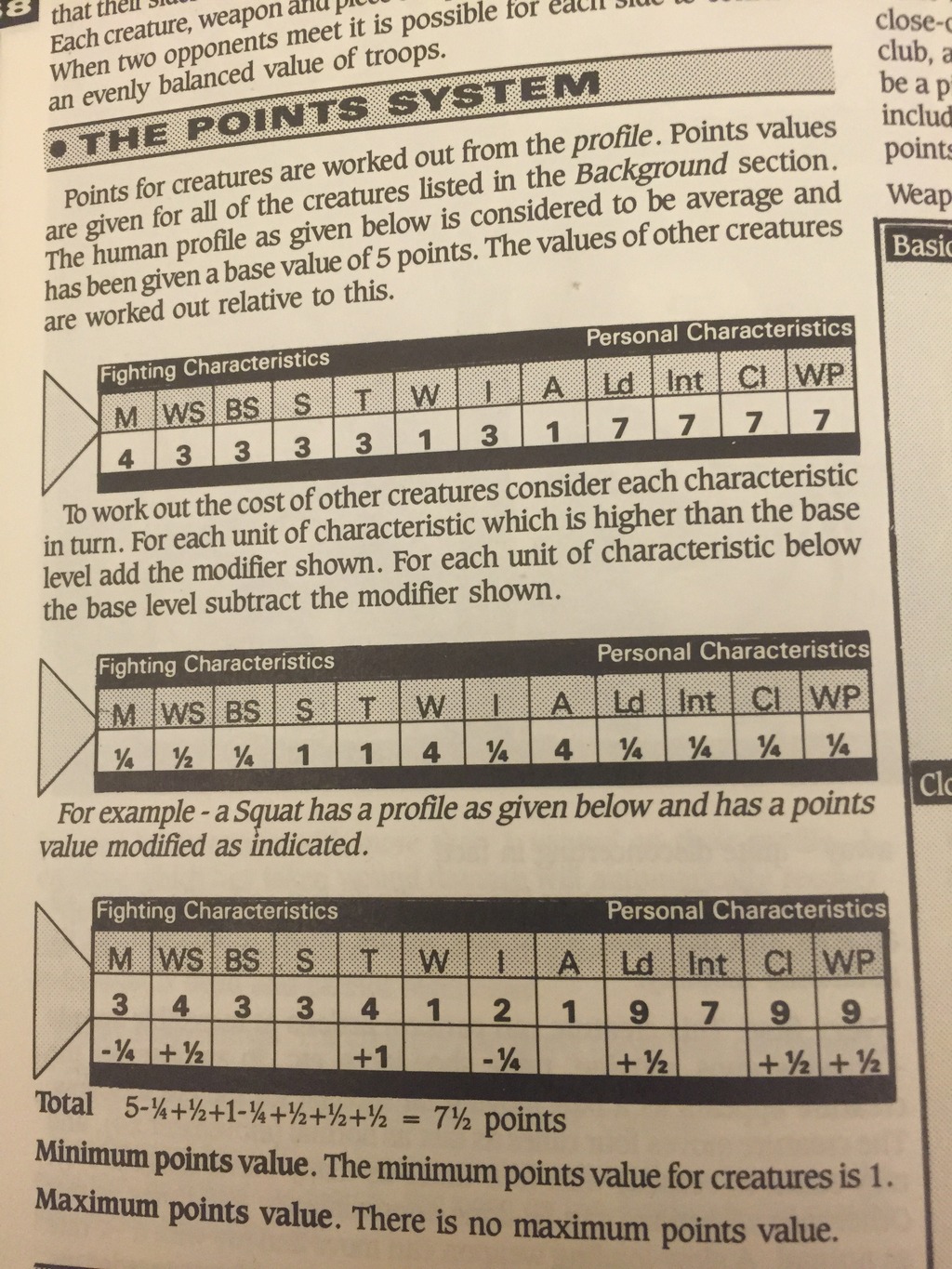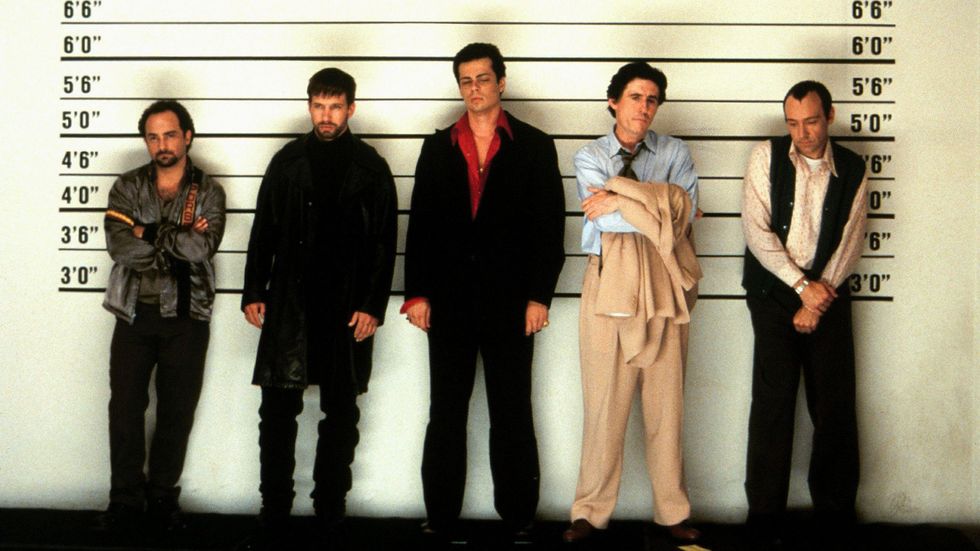40K Deep Thought: The More You Try to Balance…


Recently one aspect of 40K has to my mind come to the fore and is a constant source of debate, and that is balance. But should we expect it AT ALL?
A guest editorial by BoLS Lounge alumni: Denzark
40K is a hobby that generates a lot of discussion. Whether this is about modelling, gameplay, rules, the latest releases, or the seemingly inscrutable GW modus operandi, someone somewhere is mulling it over especially on the interwebs. But recently one aspect has to my mind come to the fore and is a constant source of debate, and that is balance. Is it balanced or not?
Why balance?
40K – playing the actual game – is something we do (ostensibly) for fun. I have not heard of anyone whose exclusive employment from which they make a living, is ‘professional 40k player’. So when you throw down those models and roll those pesky dice, I can only assume it is for fun. And when humans have fun, and that fun has a competitive edge (a defined winner/loser) they also want to be treated fairly. Unfair is not fun. There may be caveats to this. Now and again you may play an ‘Orks Drift’ or re-spawning Tyrannid horde scenario where the defender cannot win. This might not be fair on the face of it, but when it’s the whole point of the game it is probably for fun. So the question is, beyond the individual not being a cheat, what is inherent in the game itself (ie the rules) to ensure fairness – ie what brings the balance?
Balance – a matter of points.
The biggest single arbiter of balance within the rules is the points cost of various models. The whole raison d’être behind the points cost is to try and match approximate force strengths between 2 disparate army entities made up of different units. I have referred elsewhere to my contention that the points cost is the equivalent of 18th Century doctors using Latin as a common language between brothers in medicine worldwide. In 40K terms, no matter where you go, 1000pts of army x should be roughly as powerful as 1000pts of army y. I contend here, that if you don’t think this is the case (I acknowledge it is not exact), you probably shouldn’t expect ever to have a balanced game unless you are using an identical force to your enemy.
Are points allocated scientifically?
In the past, it could be argued that they were and actually, Rogue Trader detailed the methodology, providing the breakdown on Page 58. The picture here details it, but in short, the basic human profile was worth 5 points. Against every characteristic there was a modifier so, take WS. For every point over 3, add ¼ of a point. For every point under 3, subtract ¼ of a point. There was even multiplying factors for larger creatures.
But does this apply now? If you take away the points for additional characteristics long gone (M, Int, Cl, WP totalling -2 pts) and apply to cultists, you are in the same bracket – before you add the cost of flak armour (6+ save) and an autopistol and hand weapon – so a cultist on the RT system should be base 7pts. By comparison today’s Astra Militarum come out at 9pts base each from RT, and a Space Marine comes out at 21pts base in RT. You can see how costs have degraded to ‘allow’ us to field bigger armies – obviously at greater RL financial cost.
Fast forward to 3rd Ed, and the design philosophy changed. Page 272 in the Annex talks about points cost, and how higher BS and Squads full of heavy weapons are more effective – therefore the points of that weapon will cost more to balance that skew. This is a departure from RT/2nd Ed where points cost reflected the availability of that equipment to any given army. But also, turn back a page. Under a paragraph entitled: “The Hand of Fate” no lesser personage than Andy Chambers has something to say on ‘tight’ rulesets:
“The first and most fundamental principles of wargaming rules: They are loose, wooly affairs which never detail exactly what you want to know in any given situation. “Why” I hear you chorus, “Isn’t that your job you charlatan?” (you may want to use stronger terminology here). It’s because wargaming isn’t played on a gridded-out playing area with a set number of strictly defined pieces. Wargaming is about colour, movement and breathing life into the armies you lovingly amass and then drive headlong into your opponent. The number of variables in a normal miniatures game is simply staggering if you consider the diversity of terrain, armies, playing area, dice rolls, points values and all the rest of it.”
So – the date is 1998, and the Overlord Andy Chambers is telling you you won’t get a fully boxed off airtight ruleset. Hold that in mind – we may have forgotten that over the years…
Now look at the fabled Vehicle Design Rules. Once upon a time (4th ed), the VDR was published and such things encouraged. It was often commented upon that all of the ‘stock’ GW vehicles were costed cheaper than they came out using the VDR. And the retort I recall was that GW felt the enhanced cost of home-built vehicles was considered ‘fair’ against the benefit of tailoring a vehicle to your exact needs. Here we see an element of subjectivity being accepted as an inherent concept in design. Just pause and think about that a sec. SUBJECTIVITY IS AN INHEHRENT CONCEPT IN 40K DESIGN. And Andy Chamber hinted at this a whole edition before.
What else can skew balance?
Points are not enough to maintain balance. One has to consider the effects of I go, you go (IGYG). The winner of first turn can have a massive advantage and depending on which way you play, you could have separate rolls for table edge, deploy first/second and go first/second – and one role allowing the high roller to choose edge, deploy first or second and go first or second. Randomness can skew balance. This is massively prevalent in Maelstrom missions – depending on how your deck falls and which mission you are playing, the game can literally be won in turn 1’s movement phase. But the main thing that skews balance for me, is rules that operate outside the BRB – most normally army or codex special rules.
Special rules – the worst offenders.
If one accepts that the points of a given unit have some sort of pseudo scientific method, how can one empathise that the Design Team costed various special rules? Any time someone acts against the core rules; that for me is the biggest game changer in effecting the performance of their army. Let me tell you my own perceived worst offenders – I fully acknowledge YMMV:
Gauss. The ability of massed gauss fire to degrade armour is a huge bonus. Nearly everyone in the necron army therefore has a chance to affect the heaviest armour. A marine plasma gunner will likely carve though terminator armour that the gauss allows full save for – but the plasma bounces off a landraider like a pebble.
Tau – marker lights and mutual overwatch. I can’t begin to describe how much this frustrates me. Tau technology should be less advanced than Eldar and Tau fighting skills are less that Space Marines. But neither of the latter can gang up on poor old berzerkers coming to make friends up close and personal. How was that ability costed?
Drop Pods. Ignore grav. The ability to get within rapid fire range for an alpha strike turn 1 is epic. And now, some of your buddies can bring empty pods as fast attack – so the ‘only 50% arriving turn 1’ isn’t quite so bad because you maximise how many boots you get on the ground. And the cost of a Rhino a pop.
Wyverns. 3 of them cost only just more than a stock tac squad. They can can’t be damaged from the front arc by less than S6 (except for my old pal gauss) and their damage output is immense especially next to said tac squad. And they are now scoring units.
And now we approach the epoch of Eldar bringing D in spades…
Back to balance…
With all of the factors above, is it possible to have truly balanced game of 40K? Well actually even if you took the top boys from Privateer Press and FFG, bathed them in the blood of Mat Ward and then let them have free range on the ruleset, terrain and IGYG can render the tightest ruleset an irrelevance if one side is unlucky. In fact even if both players had identical armies on symmetrical terrain with an even number of objectives, first turn would still be a factor. But don’t forget Andy Chambers told us 17 years ago the rules would not be the final answer to everything…
Re-balancing – pick up games.
If we accept 100% balance is impossible, how can pick up/club gamers mitigate against the inherent imbalances of ruleset and (U)SRs? Crucially, pre-game discussion. You need to have that chat to make sure that where one person brings a beautifully painted FW space marine army all in MkII armour with accompanying back story, and the opposition has an unbound summoning monster with D, FMCs and a half built grey horde to practise for a cutthroat tournament, that expectations don’t actually totally miss each other. I have been to numerous clubs in the UK and I always find I will impart 3 pieces of information to my opponent: Do I have any fliers, Do I have any super-heavies and is my army a tournament tuned nasty? In 99% of cases the opponent will reciprocate with this information and where it is not clear I would like to know what to expect in return hey – guess what – I ask them!
Re-balancing – Tournaments.
I respect the hell out of TOs, I really do. But in the same way I have demonstrated a level of subjectivity in 40K, TOs are naturally subjective. What you think is an improvement to the problems may not be. Why should we trust your house rules are better than the shambles the design team has come up with? Too much tinkering is counter-productive. What you can do is this: Firstly, place terrain symmetrically so it doesn’t matter which side gets which. Secondly, make sure each side has an equal number of objectives if the game is objective based (if you have an odd number and the players are placing, the gunline player who is lucky to have 3 objectives to place behind his ADL and tank park is already at an advantage. Next, ensure that whatever happens both sides get an equal number of turns (leave time between rounds in case of run over). Lastly, ensure you use a swiss progression system so that the naturally stronger players/armies face off against each other (you may think this point is obvious – but GW use random table selection through all rounds of their in-house GTs). Finally, consider not playing Maelstrom because it is just too random if you are trying to claim balance with your house rule nerfing of ranged D and invisibility.
Balance – final thoughts.
‘But wait’ I hear you cry – ‘If your saying the game is inherently unbalanced then by your rational the game is inherently unfair!’. OK. This is a difficult concept to reconcile. We know that x points from the Dark Angels Codex gets you less bang for your Imperial Solari than y points from the Codex new kid on the block with infantry at 3.5 points and FMCs with twin D at 34 points. There is an imbalance in the codexes. If this imbalance is beyond your ability to deal without serious mental angst I haven’t got much to suggest. Have you tried using the battle missions? Have you tried planetfall? Have you thought about a fortification or an ally? Is there a super heavy that fits in your army fluff so you are not doing some unlikely fist bump with the necrons?
You see the reason I ask this is that the designers and GW seem to be doing something we wanted back at the time of 5th ed. Yes, you heard me, GW is doing what its customers wanted. We wanted a quicker release schedule, et voila. The sandbox of 40K has never been so varied so, to mix my metaphors, if you are like the French at Waterloo, and as described by Lord Wellington ‘come on in the same old way’ then in all likelihood you are going to be ‘seen off in the same old way’. If eternal war 1.5k isn’t floating your boat, change it up.
Embrace the inherent unbalance of 40K. It is not balanced, it never has been balanced and it never will be – neither is it intended to be and we were told this almost 2 decades back. But you know those square things with little dots on? Those are dice. There is a random aspect to 40K and there is a random aspect to war. The randomness and imbalance of 40K equally affects your opponent, so look for ways to mitigate and risk manage this aspect. You will find then that balance is just your starting point, to make sure bantam weight doesn’t fight super heavy weight. It is the handrail before jumping off into the grim dark future of the 41st millennium and if you can’t accept this I hope you are more fulfilled by pre-paints with 3 factions and the flat table space of a galaxy far far away, or using your super combo to kill the opposition warcaster. I for one will be trying to smash Eldar warts, D and all.
In the nightmare future of the 41st millennium, there is no time for peace. No respite. No Balance. There is only War.





